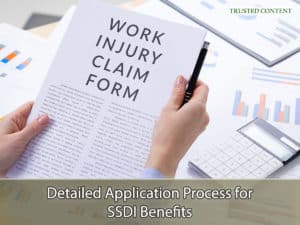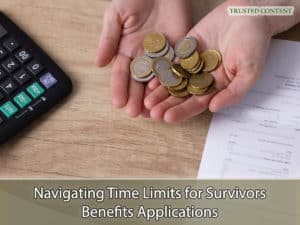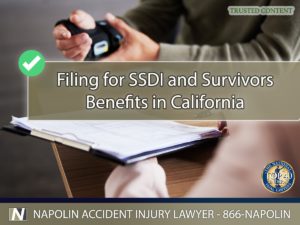Filing for SSDI and Survivors Benefits in California
Social Security Disability Insurance (SSDI) offers vital financial support to individuals who cannot work due to a disability. In California, eligibility for SSDI hinges on having worked long enough and recently enough, while also having paid Social Security taxes on your earnings. The Supplemental Security Income (SSI) program, on the other hand, aids adults and children with disabilities who have limited income and resources. While SSDI and SSI differ, their medical requirements are identical. To qualify, applicants must have a medical condition that is expected to last at least one year or result in death.

Detailed Application Process for SSDI Benefits
Detailed Application Process for SSDI Benefits
Applying for SSDI benefits requires careful preparation. Applicants must gather extensive documentation, including medical records, work history, and personal information. The Social Security Administration (SSA) reviews applications to confirm eligibility, work history, and current work activities. The application is then processed by the state's Disability Determination Services, which makes the final decision. The entire process can take three to six months, and applicants can check the status of their application online or by phone.
Understanding Time Limits and Waiting Periods for SSDI
Time constraints are critical in the SSDI benefits process. Applicants should file for benefits as soon as they become disabled. There is a mandatory waiting period of five months from the onset of disability before benefits can begin. This waiting period reflects the SSA's definition of disability as a condition expected to last at least one year or result in death.
Survivors Benefits: Support for Families After Loss
Survivors Benefits are designed to provide financial support to family members after the death of an individual who was eligible for Social Security benefits. Eligibility for these benefits depends on the deceased's work credits and the relationship to the deceased (such as widows, widowers, and children). The benefits aim to help families cope with the financial impact of losing a loved one who was a primary earner.
Procedure for Reporting and Applying for Survivors Benefits
The process of applying for Survivors Benefits begins with reporting the death to the Social Security Administration. This is often done by the funeral director. Applicants need to provide the deceased's Social Security number and other relevant information. The SSA then determines the eligibility of family members for various benefits, including a one-time lump-sum death payment and monthly benefits.

Navigating Time Limits for Survivors Benefits Applications
Navigating Time Limits for Survivors Benefits Applications
Time limits for filing for Survivors Benefits vary. For instance, the lump-sum death payment claim must be filed within two years of the death. Other types of Survivors Benefits, such as monthly payments, have different time frames and eligibility criteria. It's crucial to understand these limits to ensure timely filing and receipt of entitled benefits.
Seeking Legal Assistance for SSDI and Survivors Benefits Claims
The complexities of SSDI and Survivors Benefits claims can be daunting. Legal assistance can be invaluable in navigating these processes. An experienced attorney can provide guidance on eligibility, documentation, and adherence to time limits. They can also assist in appealing denied claims, ensuring that all potential benefits are pursued effectively.

Filing for SSDI and Survivors Benefits in California
Filing for SSD and Survivors Benefits in California
Understanding the intricacies of SSDI and Survivors Benefits in California is crucial for those facing disability or the loss of a family member. At Napolin Accident Injury Lawyer, we are committed to guiding you through these challenging times. If you need assistance with SSDI or Survivors Benefits claims, contact us at (866)-NAPOLIN for a free consultation. Our extensive experience in these areas ensures that you receive the dedicated and effective legal representation you deserve.
- Safely and Legally Navigating Parking Lots in California - July 15, 2024
- Navigating the Aftermath of a Highway Auto Accident in California - July 15, 2024
- An Overview of California's Commercial Truck Insurance Laws - July 15, 2024
